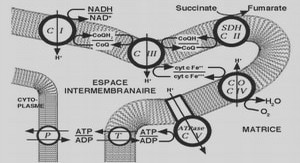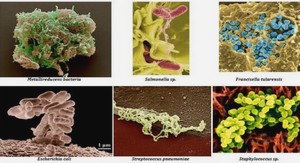Résumé
Des différences de structure et de composition de la végétation sont généralement observées entre les étapes de succession après feu. Par conséquent, on s’attend à ce que ces changements affectent aussi les communautés d’oiseaux. Toutefois, on en connait très peu sur les changements à long terme des communautés d’oiseaux à la suite de feux en forêt boréale non-aménagée. Dans la présente étude, nous avons évalué et comparé les communautés d’oiseaux le long de deux chrono séquences après feu (0 à >200 ans) dans la forêt boréale de l’Est du Québec, où le cycle de retour des feux est long. Grâce à la caractérisation de l’habitat forestier à l’intérieur de ces chrono séquences, nous avons pu modéliser la richesse et la composition en espèces d’oiseaux pour trois types d’habitat : forêt mature, forêt de bordure et forêt ouverte. Même si la richesse en espèces n’a que très peu varié en fonction des classes d’âge des parcelles, plusieurs espèces sont disparues et d’autres ont été recrutées suivant les étapes de succession. Le calcul d’un indice de communauté d’oiseau m’a permis d’observer une différence de composition d’espèces et du nombre d’espèces jugées sensibles aux changements apportés à l’habitat. Cette étude souligne la nécessité de protéger les différents stades de succession de la forêt boréale, particulièrement les vieilles forêts qui procurent un environnement hétérogène requis par un grand nombre d’espèces. En conservant une mosaïque de peuplements de tous les âges, la forêt naturellement perturbée par les feux permettrait de sauvegarder la diversité aviaire de la forêt boréale de l’Est.
Study Area
Our study was conducted in the Québec North Shore region, in the northeastern part of the Canadian boreal forest. The topography is characterized by hills and moderate slopes (1630%), the maximum altitude recorded is 700 m and the climate is cold maritime (Robitaille and Saucier, 1998). According to the nearest meteorological station located in BaieComeau, average annual temperatures fluctuate between -2.5 and 0.0 °C and annual precipitations between 1100 and 1130 mm, 35% of which falling as snow (Anonymous, 2002).
Surveys were carried out in two regions of the study area: the southern region (49°42’N, 68°51W), located a few kilometers north of Baie-Comeau and the northern region (50°57’N, 68°50’W), located south of the Manic 5 reservoir (Fig. 7). These regions overlap two bioclimatic sub-domains of the boreal zone: the balsam fir-white birch domain (southern region) and the spruce-mosses domain (northern region). Balsam fir characterizes the former, with black spruce dominating stands in poorer sites (MNRF, 2003). As latitude increases (changing to the latter sub-domain), forest stands are increasingly dominated by black spruce. Dominant species found in the study area include balsam fir, black spruce, white spruce (Picea glauca (Moench) Voss), jack pine (Pinus banksiana Lamb), white birch and trembling aspen. With time elapsed since the last fire, the size structure of live trees becomes more irregular which is generally accompanied by a gradual increase in balsam fir abundance (De Grandpré et al., 2000).Fire history has been reconstructed over the area by (Bouchard et al., 2008) who mapped burned stands larger than 10 hectares and up to 200 years since last fire. In each of the two regions, 30 stands were identified to form a chronosequence after fire (Fig.7). For each chronosequence, five stands were selected in each of the following age classes: from 0 to 50 years since last fire (class 1), 51 to 100 years (class 2), 101 to 150 years (class 3) and 151 to 200 years (class 4). Moreover, we selected ten mature stands for which the time since fire (TSF) was not determined, but was greater than 200 years (class 5). Overall, we sampled 60 stands (2 chronosequences of 30 stands per chronosequence) within which we established two types of inventory plots.
Forest stand inventory
In each selected stand, we established a standard inventory plot to characterize stand composition and diameter distribution. These circular plots covered 400 m2 with a fixed radius of 11.28 m and were established from May until August 2007. In each plot, all snags and live trees were identified, along with their diameter at breast height (DBH) for trees larger than 9.1 cm. In addition, 20 subplots of 4 m2 were systematically established in the 400 m2 plots, five per cardinal points. In those subplots, all live and dead saplings (trees from 1 to 9.1 cm DBH) were recorded by species and size. Finally, four additional 1 m2 plots were established to count the number of tree seedlings.
To estimate snag abundance, we established one 50 x 20 m plot adjacent to the standard inventory plot in each of the 60 stands selected from the two chronosequences. In each plot, we tallied solely snags to increase sample size because the 400-m2 inventory plots were too small to accurately determine the amount of snags available to birds. For each snag, we determined height (+ 0.1 m), and DBH (+ 1 cm). For the purpose of this study, only snags with DBH >9.1 cm and a minimum height of 1.3 m were considered. These characteristics are considered minimal conditions for nesting or foraging birds (Thomas et al., 1979).




